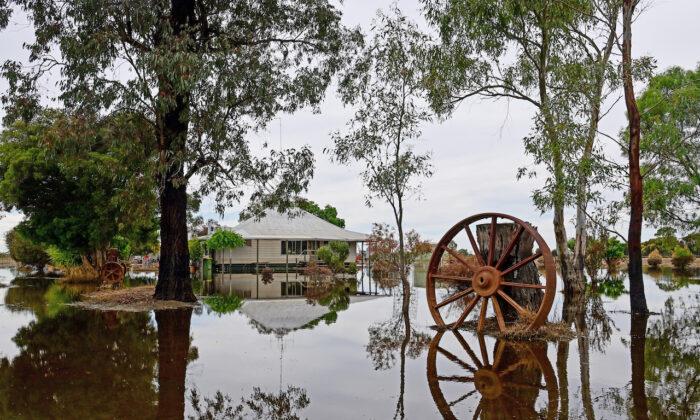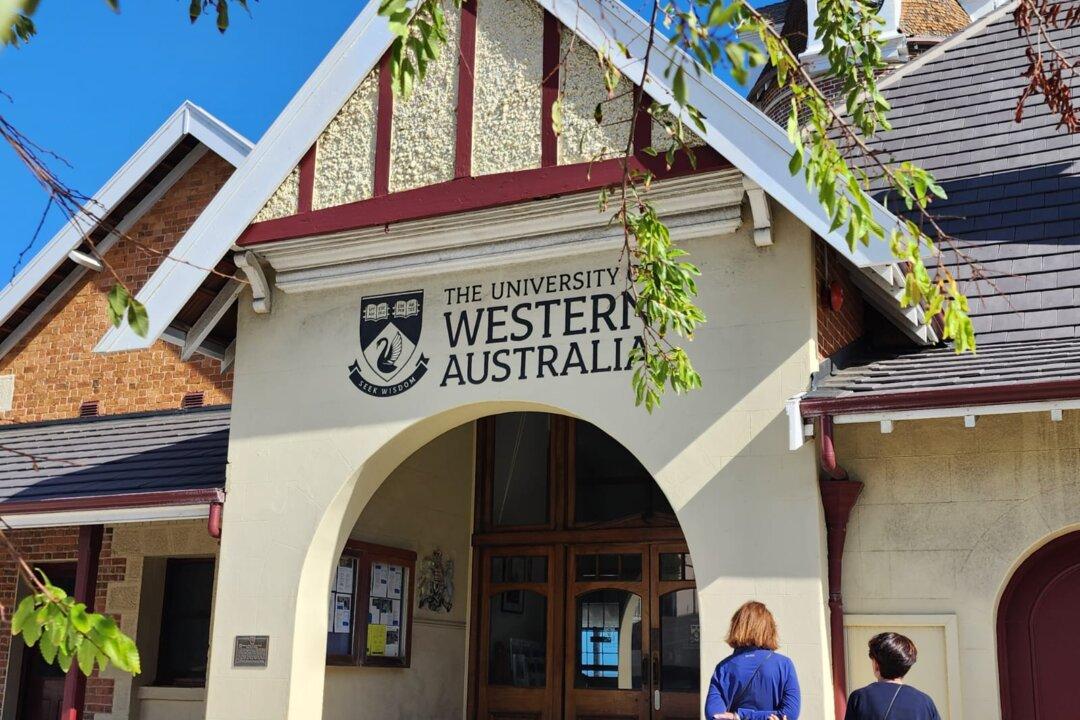Farmers are facing a long, pot-holed and often crumbling road to recovery as they forge ahead with post-flood recovery efforts.
Victorian farmers are rebuilding fences, tracks and shed bases after a weak harvest when spoilt grain and fruit crops were salvaged for livestock feed and fruit juice.
In northern Victoria, Rochester crop farmer and contractor Geoff Dwyer said the floods had been devastating.
“Crops were badly affected... but we still put the headers over them and got back what we could, but it’s only suitable for stock feed,” Dwyer told AAP.
“But what do you do... you’ve got to bat on, mate.”
In Ardmona in the Goulburn Valley, Fruit Growers Victoria chair Mitchell McNabb said hailstorms at the end of 2022 had punctuated the floods and damaged up to two fifths of the region’s already downgraded harvest.
“Farmers are struggling a little bit at the moment with where they’re heading,” McNabb told AAP.
The Goulburn Valley produces roughly 90 percent of Australia’s pears and almost 50 percent of its apples.
The fifth generation farmer said FGV and Apple and Pear Australia had been in talks with state and federal governments to access disaster recovery funding to repair and reinvest in their businesses.
“That may be around hail netting, new planning systems to increase productivity or some of the new irrigation techniques and systems ... that allow the trees to be in better condition and produce better quality fruit on these tougher years,” McNabb said.
Campaspe Shire Mayor Rob Amos said it was key that government support was ongoing throughout the recovery process.
“What we need to make sure is that that support doesn’t fade away for our communities,” Amos told AAP.
“We know we’re not the only ones, but we want to make sure that this is a long term thing and we need the federal and state governments to stick with us.”
In Serpentine, about 130 km west of Shepparton, mixed grain and sheep farmer Prue Milgate and her family have rebuilt three shed bases and are about to start re-cutting tracks, all off which were washed away when the Loddon River overflowed.
“We’ve got a grader and gravel loads coming this week, just because with harvest we’ve been run off our feet,” Milgate told AAP.
The Milgate’s farm was completely cut off during the floods.
“The state of the roads in regional Victoria is our biggest issue, they were bad before the floods and now they’re horrific,” Milgate said.
“Our whole businesses rely on vehicles being able to get in and out, like chemical deliveries, sheep getting delivered to the feedlots, to the abattoirs, to the supermarkets.
“If we can’t get the trucks on the roads our businesses can’t operate.”
Milgate said the poor harvest was flowing onto local businesses already reeling from flood closures.
“Our regional community is suffering,” Milgate said.
She said local businesses were the backbone of regional communities, sponsoring sports clubs and services such as playgroups.
“My message to people out there is please, come out to country Victoria, NSW, SA, Queensland and now the Kimberleys, anywhere that’s been hit by floods, please go visit them ... they’re our biggest supporters really.”






Friends Read Free